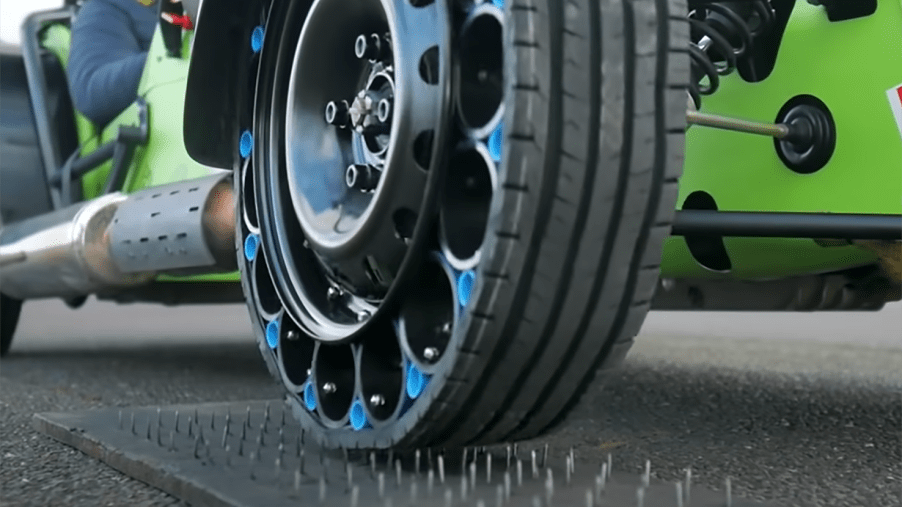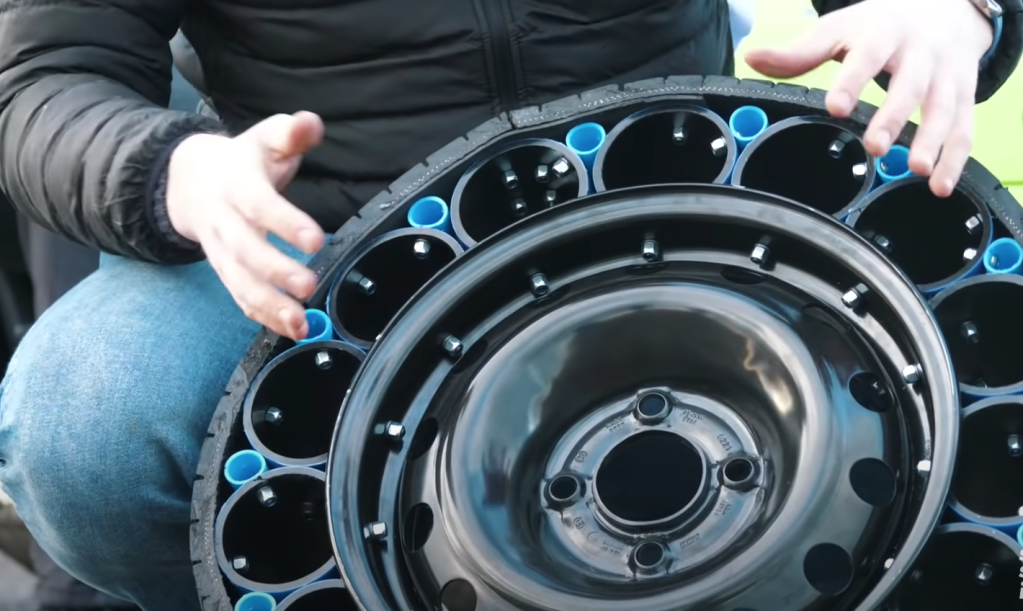
Watch: Tired of Waiting for Airless Tires? Make Your Own
Michelin’s airless tire development has been going on for over a decade with nothing hitting production. It is said to be finalizing the development of the airless tires for use on the next-generation Chevy Bolt. But why wait when you can make your own. Yes, this video and others show how DIY works for building your own airless tires. Though we don’t recommend it, individuals seem to be having success with their efforts.
Making your own airless tires isn’t as hard or expensive as you think

Using fairly basic materials and tools, the UK’s Driven Media made four airless tires for just a few hundred dollars and some time. It started with four 14-inch steel rims and tires, 15 lengths of freshwater pipe, a smaller plastic pipe used as anti-vibration dampers, and a few hundred nuts and bolts. And regular tire treads were looped around the airless wheels and glued down.
The instructions and actual building of an airless tire are pretty rudimentary, but where the excitement comes is during testing. Obviously, there was no laboratory or simulated testing. This was seat-of-the-pants real-world drive it and find out. Thankfully, the Caterham Seven is a fairly lightweight vehicle at only 1,750 lbs with passengers. That means there are approximately 450 lbs of load per corner when static.
Of course, side loads and weight shifts mean those tires are dealing with more than just a few hundred pounds in actual use. At least the roll cage would help in any rollover, as long as it didn’t fold up in a wad. And visually, there is something compelling about the DIY tires that the Michelin versions don’t possess.
100 mph and drifting were the ultimate goals for the airless tires
The initial testing was at low speeds. But the intent was to hit 100 mph and to also be able to drift. Talk about side-loads. And Driven Media also fashioned a bed of nails to see how the tires performed for what they’re actually intended for; puncturing.
While the tires performed well in their initial tests, there was one big downside. They were noisy. The tires clanked like a wagon being pulled by 50 horses. Possibly using a rubber garden hose cut up for dampers might help to some extent.
To see how much noise was being generated the crew used a noise meter to check decibels. They put back on the stock tires and measured. What they found was that the airless tires were two times as loud as the conventional tires. Not so good.
There were some issues

The next problem was when reaching normal speeds, a few of the bolts backed out of the assembly. But it didn’t seem like an issue as once bolted back in they behaved as you would hope they would. Driving through town, hitting potholes, and gliding over speed bumps didn’t seem to affect the tires. And the testers indicated driving it felt like driving on traditional tires. Other than the noise.
As far as drifting, we’ll leave you hanging. Suffice it to say, it is amazing that MacGivering airless tires could find this type of success. And in some ways, it suggests that creating airless tires as seen here, should lead to more immediate solutions to tire production.
So you entrepreneurs out there, here’s your next pursuit; making DIY airless tires. It may not be as sexy as rapid blood tests like Theranos was claiming, its practical applications could open up billions of dollars worth of products that every vehicle needs.



